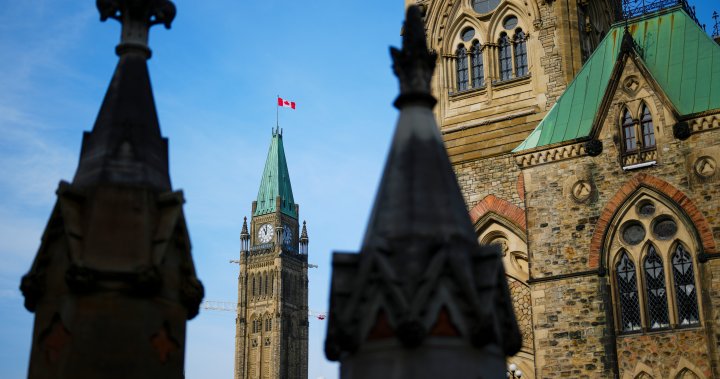The Canadian Parliament’s fall sitting of 2024 concluded amidst significant political upheaval, marked by a tumultuous atmosphere of non-confidence votes, legislative gridlock, a burgeoning national deficit, and the unexpected resignation of Finance Minister Chrystia Freeland. These events have cast a shadow of uncertainty over the Liberal government’s stability and its ability to navigate the challenges ahead.
Freeland’s sudden departure sent shockwaves through the political landscape, prompting calls for Prime Minister Justin Trudeau’s resignation from within his own party. The ensuing division within the Liberal caucus underscores the depth of the crisis and raises questions about the government’s ability to maintain unity and effectively govern. The appointment of Dominic LeBlanc as the new Finance Minister, while a necessary step to fill the void, adds to the existing burden on LeBlanc, who also holds the portfolios of Intergovernmental Affairs and Democratic Institutions.
The fall economic statement, released shortly after Freeland’s resignation, revealed a stark fiscal reality: a ballooning deficit of nearly $62 billion, significantly exceeding the $40 billion target previously set by Freeland. This widening gap between projected and actual figures reflects the government’s struggles to manage public finances amid economic uncertainty and rising expenditures. A notable portion of the new spending is allocated to border security enhancements, a direct response to the protectionist rhetoric and tariff threats emanating from the incoming US administration under President-elect Donald Trump.
LeBlanc’s immediate priorities as Finance Minister will be twofold: addressing affordability challenges faced by Canadians and overseeing the implementation of new border measures. The rising cost of living has become a major concern for many households, and the government will be under pressure to provide relief and ensure economic stability. Simultaneously, the need to strengthen border security in the face of potential trade disruptions with the US adds another layer of complexity to LeBlanc’s already demanding agenda. Until Prime Minister Trudeau undertakes a more comprehensive cabinet shuffle, expected in the near future to replace retiring ministers, LeBlanc will continue to juggle these responsibilities alongside his existing portfolio of Public Safety.
The political landscape heading into the winter recess is fraught with uncertainty, particularly regarding the Liberal government’s ability to maintain the confidence of the House. The NDP, which has previously supported the Liberals on crucial confidence votes, has signaled a shift in its stance. NDP Leader Jagmeet Singh publicly called for Trudeau’s resignation, though he stopped short of explicitly committing his party to vote against the government. This ambiguity leaves the Liberals in a precarious position, potentially facing a loss of crucial support that could trigger an election or a change in government.
Adding to the government’s woes is the legislative logjam that characterized the fall sitting. A prolonged filibuster by the Conservative opposition, centered on a privilege motion related to alleged misspending in a defunct green technology fund, effectively paralyzed the House of Commons and prevented the passage of key legislation. This obstructionist tactic, while a legitimate parliamentary maneuver, further contributed to the sense of dysfunction and gridlock that plagued the fall session. The resumption of Parliament on January 27th, following Trump’s inauguration, promises a challenging environment for the Liberal government, with the potential for further political turmoil and legislative battles. The confluence of economic uncertainties, internal party divisions, and a volatile relationship with the opposition parties sets the stage for a potentially defining period for the Trudeau government. Its ability to navigate these challenges and regain the confidence of both the House and the Canadian public will be crucial to its survival.

